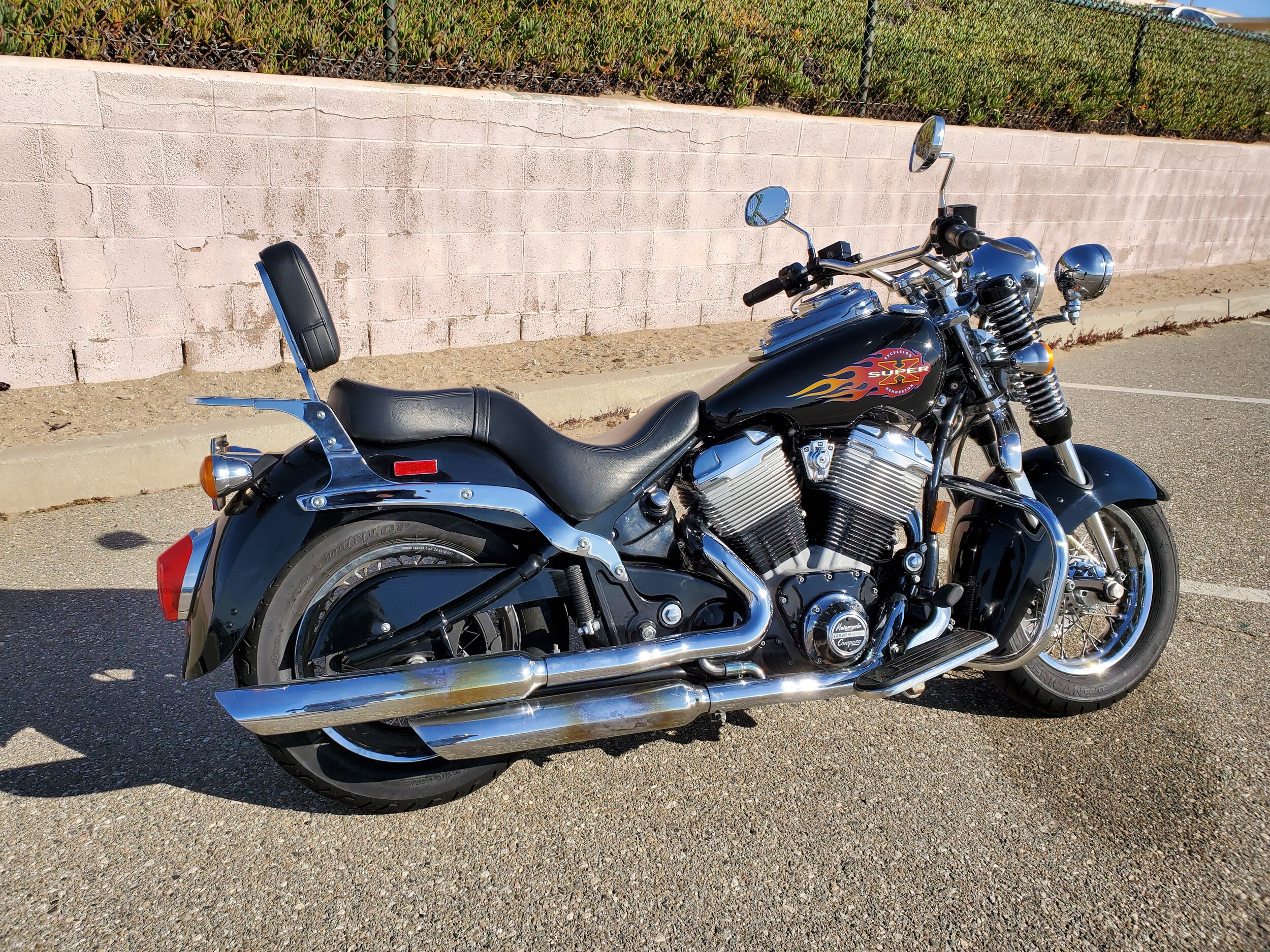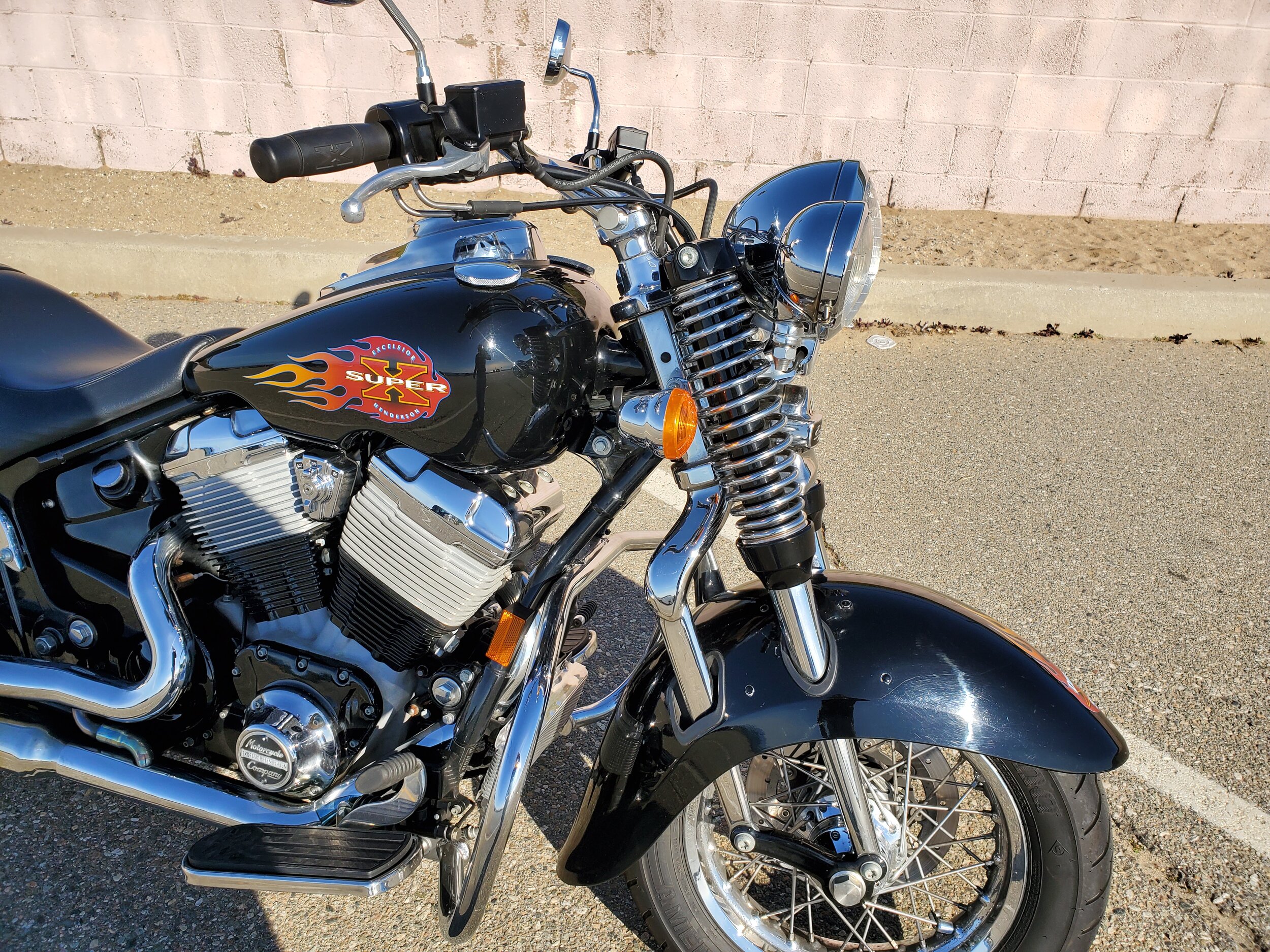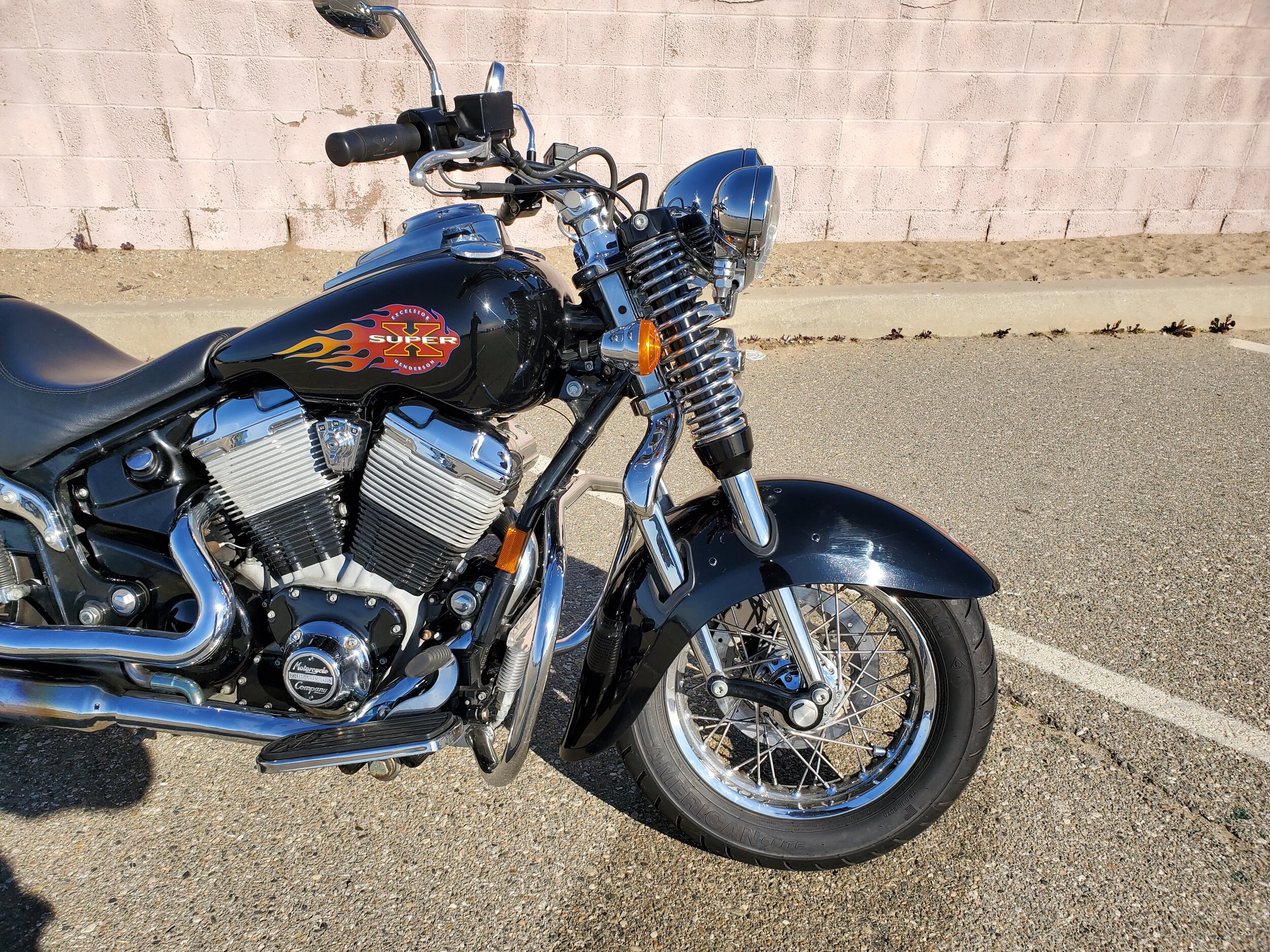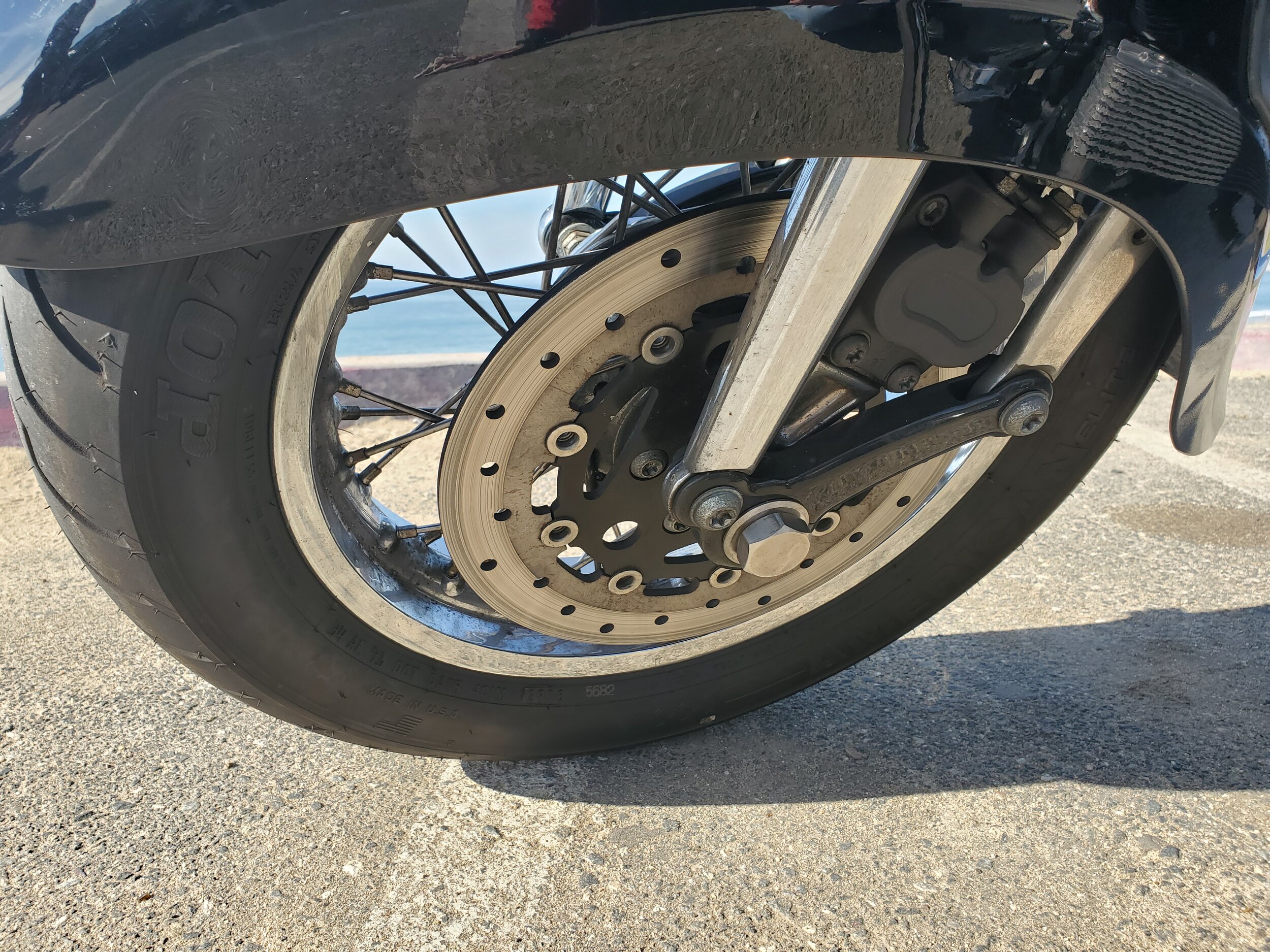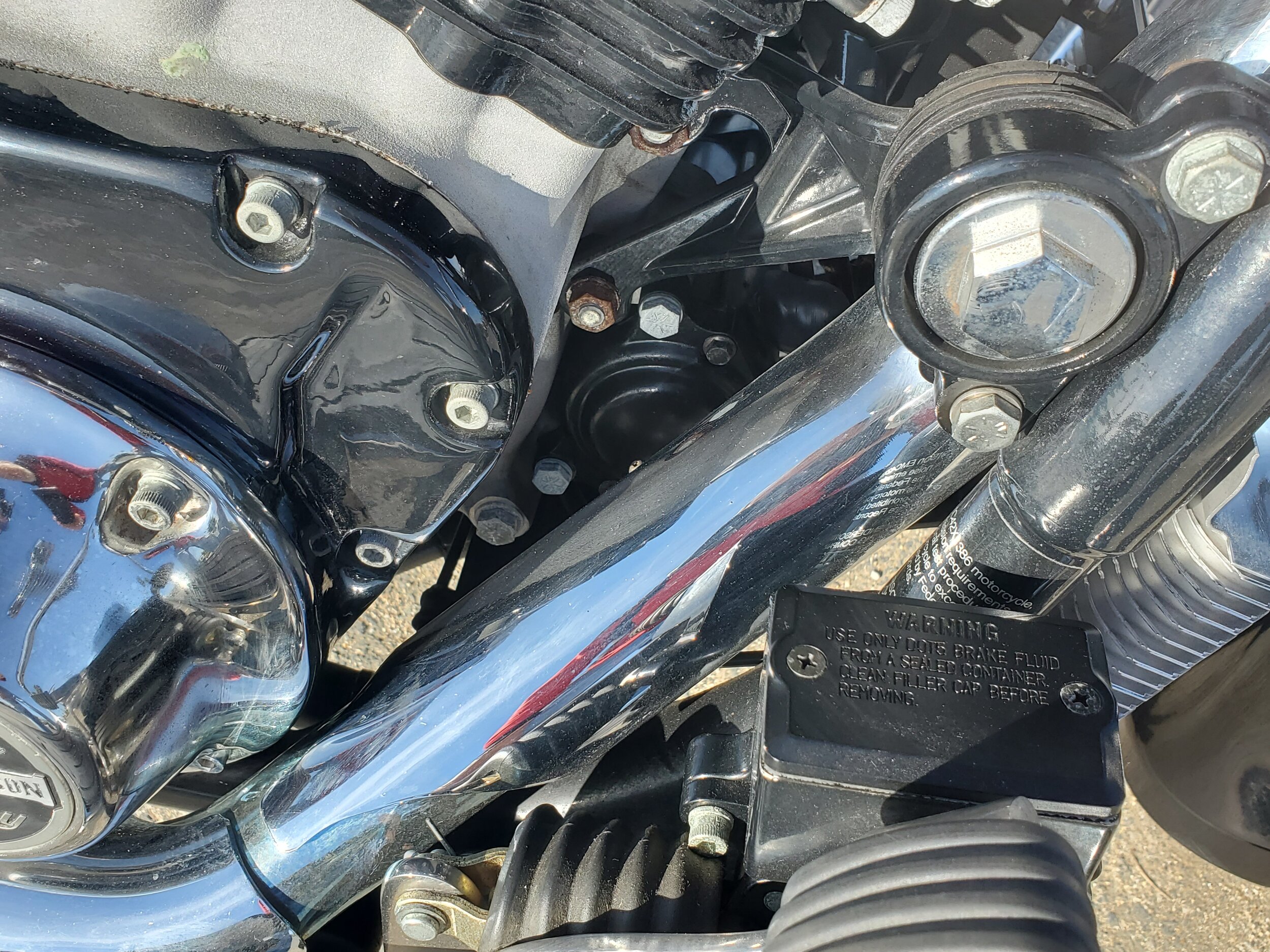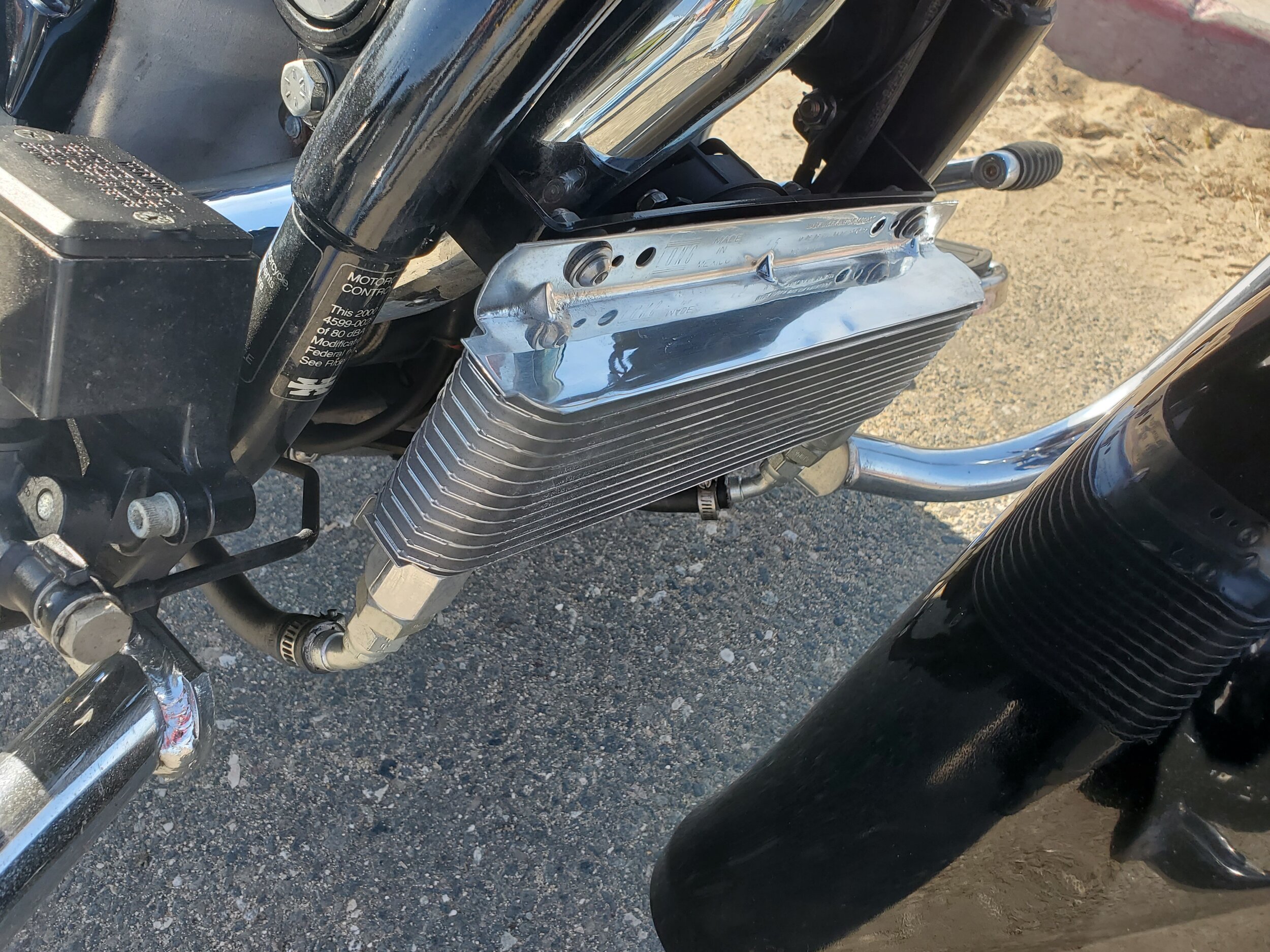2000 Excelsior Henderson Super X Deadwood Edition
VIN: 5EH1HCXSXYB001871
Wow! One of only 77 Deadwood Specials ever produced.
This is an extremely rare and way cool motorcycle that absolutely stops traffic where ever you ride it. This bike was previously owned by a collector and has just over 425 miles that are said to be correct. Powered by an 85” / 1400 cc 50-degree dual overhead cam V-Twin with 4 valves per cylinder & Electronic Fuel Injection, followed up with a 5 speed transmission and belt final drive. Staggered dual exhaust sounds great but again typical of many EH bikes mufflers are discolored. Overall condition of body work and paint is very good with some very miner scratches, rubs and chips typical of a bike this age. Seat has a fell very small holes that look like cat scratches (see photos)Chrome is in good condition overall with some slight amounts of pitting and corrosion again typical of bike of this age. Tires are excellent but have aged out so should be replaced if bike is to be ridden much. Rear wheel is in good condition with very light pitting, front wheel has heavy corrosion – pitting – chrome peeling (this is a very common problem on all Excelsiors I have seen) see detailed photos. This bike also features an electronic oil cooler with fan that is a great edition. Bike was recently serviced including a complete fuel system cleaning, new in tank electric fuel pump with filter, fuel injectors were cleaned, serviced and electronically inspected before installation. Bike starts easily & idles down correctly, runs and rides extremely well. Really a joy to ride and attracts a lot of attention. I would ride this bike anywhere!
Some interesting background info from Rider Magazine online follows:
Back in the early 1990s the Hanlon brothers, of Belle Plaine, Minnesota, looked at the Harley market and saw that the boom in sales had people waiting six months or more to get a bike. So they decided to give Harley a little competition by resurrecting an old American marque. A con-man named Phillip Zanghi had been raising millions in an effort to bring the Indian brand back to life (he failed), so the Hanlons decided to focus on the little-remembered Excelsior-Henderson, the third largest American motorcycle company when it went out of business in 1931, leaving only Harley and Indian in the market.
Back in the late 1920s E-H built two very different motorcycles, a V-twin Excelsior and an in-line four Henderson. This began in 1911 when bicycle-maker Ignatz Schwinn decided to branch out into the motorcycle business and bought the Excelsior Company. Six years later the Henderson brothers sold him their company, which was making the four. The last rendition of the Excelsior V-twin was in 1925, called the Super-X, while the Henderson Model KJ, a four, appeared in 1930. However, with the onset of the Great Depression Schwinn chose to shut down production of his motorcycle business. Apparently nobody had the rights to the trademark, as the Hanlons made no mention of paying anyone for the use of it.
In 1996 the Excelsior-Henderson Motorcycle Manufacturing Company was established, which went public the next year. The brothers had rather grandiose plans, building a 160,000-square-foot factory in Belle Plaine that could turn out 10,000 machines a year, with the possibility of doubling that amount. And employ a lot of people. Of course the city was extremely happy to hear this, and gave them lots of economic incentives. A rudimentary due diligence was done, asking advice from notable industry types, who all said the Hanlons were starting way too large and should begin with a much smaller operation.
The Hanlons ignored the advice, maintained the correctness of their interpretation of the market and raised some $100 million, much of it from the city of Belle Plaine and the state itself. They had a running prototype as early as the summer of 1996, but there was not a production model to show until December of 1998, with actual production beginning the next year. The air-cooled V-twin engine, based on a British Weslake Engineering design, was slightly undersquare with a 90mm bore, 102mm stroke, with a 50-degree included angle. Each cylinder had two chain-driven overhead camshafts and four valves, and the twin displaced close to 1,400cc. Keeping the inevitable vibration to a minimum, the engine used isolastic mounting and a complicated torsional damper. Programmable fuel injection was by Sagem, using a 9.2:1 compression ratio. The engine had a dry sump, and the oil-measuring dipstick may have been the longest in the history of motorcycling.
Power went from the crankshaft to the wet clutch via gears, through a 5-speed transmission, and out to the rear wheel via toothed belt. Some 63 horsepower found its way to the rear wheel, along with 70 lb-ft of torque. Good for zero to 60 mph in a modest 6 seconds.
The engine sat in a twin-tube cradle frame, with a single shock at the back allowing for 4 inches of travel. Up front—well, that was the signature design intended to melt the hearts of the nostalgists. Back in 1927 the Excelsior Super-X model used a well-sprung leading-link front fork, with the four legs of the parallelogram all going through the front fender, rather than around the outside. This new Excelsior had roughly the same set-up, except with the addition of gas-filled damping cartridges. Sixteen-inch wheels were at both ends, braking done with single 11.4-inch discs and 4-piston calipers. Wheelbase ran almost 63 inches, curb weight, with more than 5 gallons of premium in the tank, was 760 pounds. Short-legged riders appreciated the 26.5-inch seat height.
By December of 1999 the hundred million was all gone and the Hanlons needed more. Production income (sale of new bikes) in 1999 was not nearly enough to meet expenses. The company filed a Chapter 11 bankruptcy, allowing for restructuring.
Back then the late industry maven Don Brown said: “It takes about $150 million these days to field a new motorcycle of that type.” Polaris apparently invested $200 million in bringing the Victory to market, which happened in June of 1997. Brown also faulted the Hanlons for overspending on the factory and not doing enough market research. Considering the economic concerns facing banks and other sources of loans in that Y2K millennium jump, nobody was interested in doing any more backing of this industry newborn. The factory put together fewer than 2,000 bikes in less than a year and a half, with the last few hundred done post-bankruptcy from bins full of parts. Including this Deadwood Special, which had a little extra glitz; only 77 were made
In March of 2000 production ceased, but the E-H story did not end there. That month the Hanlons sold their company to an outfit called EH Partners, which took the company out of bankruptcy in August. They immediately began dismantling the operation, selling off whatever they could to make money. Lawyers and court decisions followed, and a serious auction, much advertised by the creditors, was planned for December 2001. However, a half hour before the auction was due to go on, a second bankruptcy was declared, and the auction was called off. The stockholders got absolutely nothing, and the banks worked hard to get even a small amount.
Videos:
https://www.youtube.com/watch?v=6ooCpzWm9FQ&t=44s
https://www.youtube.com/watch?v=K4YN56jvKHs
https://www.youtube.com/watch?v=8zatO3McDNw












